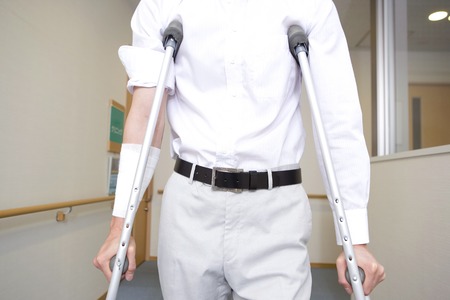Introduction: Ageing in India and the Growing Need for Elderly Care
India is a country known for its vibrant traditions, strong family values, and deep respect for elders. As we move forward into the 21st century, however, India’s population is undergoing a significant shift. With advancements in healthcare and living standards, more people are living longer than ever before. This has led to a growing number of senior citizens in our society, and with this demographic trend comes new challenges. Traditionally, caring for elders has been seen as a sacred duty within Indian families, often guided by the principle of “seva” or selfless service. Elders are revered for their wisdom and experience, and their well-being is considered a collective responsibility. Yet, as urbanisation increases and younger generations migrate to cities for work, many families find it increasingly difficult to provide round-the-clock care at home. Balancing work pressures with caregiving duties can be overwhelming. In such changing times, there is an urgent need to explore innovative solutions that can help Indian families support their loved ones gracefully and maintain the dignity of ageing. This is where technology like robotic exoskeletons enters the conversation—offering hope for a future where elderly care is both compassionate and practical, while still honouring our cultural values.
2. What Are Robotic Exoskeletons?
When we hear the term “robotic exoskeleton,” it can sound a bit like something from a science fiction movie. But in reality, these devices are designed with care and simplicity in mind, especially for our elders and their families. Imagine a lightweight jacket or a special pair of trousers, but instead of just fabric, these items are made with gentle support structures and small motors. Their purpose is to help people move more easily and comfortably, much like how a walking stick or walker provides support—but with a touch of modern technology.
Everyday Comparisons for Easy Understanding
To make it even clearer, let’s look at some common items many Indian families use every day:
| Everyday Item | How It Helps | Robotic Exoskeleton Similarity |
|---|---|---|
| Walking Stick (Lathi) | Gives balance and support while walking | Exoskeletons provide balance through powered joints |
| Saree Blouse with Hooks | Makes wearing saree easier by adding structure | Exoskeletons add structure to muscles and joints |
| Bicycle Training Wheels | Helps maintain balance when learning to ride | Exoskeletons help elders regain confidence in movement |
| Knee Braces (used for joint pain) | Supports weak knees during daily chores or temple visits | Exoskeletons offer similar but advanced support across the body |
Demystifying the Technology for Families and Seniors
A robotic exoskeleton does not replace the person’s own strength; rather, it assists where needed. For example, if an elder finds it difficult to stand up from a chair after having chai in the evening, the exoskeleton gently helps lift them up. If they want to walk around the house during Diwali celebrations or take a stroll in the park, it supports each step without taking away their independence. The device is worn over clothing, is adjustable for comfort, and is operated with simple controls—sometimes just one button. This makes it as approachable as using a television remote or setting up your favourite WhatsApp group.

3. Addressing India’s Unique Elderly Care Challenges
India’s elderly population faces distinct challenges that make day-to-day living increasingly difficult as age advances. One of the most common concerns is joint health, especially due to high rates of arthritis and osteoporosis among seniors. These conditions often result in pain, stiffness, and a loss of mobility, which can significantly impact an elder’s independence and quality of life. In India, where multi-generational families are common but nuclear setups are rising, the need for self-reliance among elders is becoming more pronounced.
Another pressing issue is the affordability of advanced healthcare solutions. While robotic exoskeletons offer promising support, their cost may be prohibitive for many Indian families, especially in semi-urban and rural areas where incomes are lower and government support is limited. The urban-rural divide further complicates access: elders in cities might have better access to healthcare technology, whereas those in villages may not even be aware of such options.
This rural-urban gap also extends to infrastructure. Urban centres may have hospitals or clinics equipped with rehabilitation devices, but rural areas often lack these facilities. Travelling long distances for care can be exhausting and impractical for elderly people, which means innovative solutions must be portable, user-friendly, and affordable to be truly effective in the Indian context.
Additionally, cultural expectations play a vital role. Traditionally, family members take on the responsibility of caregiving, but with changing lifestyles and migration for work, elders sometimes find themselves alone or without adequate support. This reality underscores the urgent need for assistive technologies like robotic exoskeletons that can help fill the gaps left by human caregivers.
By understanding these unique challenges—ranging from joint health concerns to socio-economic divides—it becomes clear why tailored innovation in elderly care is essential in India. Robotic exoskeletons represent a step towards inclusive support, helping seniors regain mobility and dignity while respecting local realities.
Advantages of Robotic Exoskeletons in Indian Elderly Care
In India, where families often hold deep respect for elders and aspire to support them at home for as long as possible, the introduction of robotic exoskeletons in elderly care brings forth a gentle transformation. Let us explore some key advantages that these advanced devices offer, specifically within our unique Indian context.
Improving Mobility and Independence
For many Indian elders, especially those living with conditions like arthritis, stroke aftereffects, or age-related muscle weakness, mobility can be a daily challenge. Robotic exoskeletons provide physical support, enabling elders to stand, walk, or even perform simple household activities with greater ease. This boost in mobility is not just about movement—it restores a sense of independence and dignity, allowing seniors to participate more fully in family life, religious rituals, or community events that are so central to Indian culture.
Reducing Caregiver Burden
The traditional Indian joint family system is evolving, with more nuclear families and working adults unable to provide round-the-clock care. Robotic exoskeletons can help lighten the load for caregivers—be they family members or professional attendants—by assisting elders with transfers (from bed to chair), walking safely around the house, or doing daily exercises. This not only reduces physical strain but also relieves emotional stress on caregivers who wish to provide loving care while managing other responsibilities.
Key Benefits Comparison
| Benefit | Impact on Elders | Impact on Families/Caregivers |
|---|---|---|
| Mobility Support | Easier movement and reduced risk of falls | Peace of mind regarding elders safety |
| Independence | Able to perform personal tasks without constant help | Allows caregivers to balance work and care duties |
| Dignified Ageing | Maintains self-respect and active participation in social life | Preserves harmony and respect within the family unit |
| Cultural Adaptability | Supports participation in festivals and rituals | Keeps elders connected to traditions and community gatherings |
Enabling Dignified Ageing in Indian Society
Dignity is at the heart of ageing gracefully in India. With the subtle assistance of robotic exoskeletons, elders can maintain their sense of self-worth by engaging in spiritual practices, attending local gatherings, or simply enjoying time with grandchildren—all without feeling like a burden. These technologies thus fit harmoniously into the Indian ethos of caring for elders with love and honour.
5. Cultural Acceptance and Practical Considerations
When we think about introducing robotic exoskeletons into elderly care in India, it is important to reflect on our unique cultural fabric and the values that bind Indian families together. In many parts of India, joint families are still common, with multiple generations living under one roof. This traditional structure often means that caregiving for elders is seen as a family duty, an expression of love and respect handed down through generations. The idea of using advanced technology such as robotic exoskeletons may at first feel unfamiliar or even distant to some families who are used to more hands-on, personal care.
The Role of Joint Families and Value Systems
Joint family systems foster close relationships and collective decision-making. When considering the adoption of new technologies for elder care, these decisions are rarely made by an individual alone; they involve the input and agreement of the entire family. Respect for elders is deeply ingrained in our value systems, and any tool or device brought into the home must align with this ethos. Robotic exoskeletons could be perceived as supportive aids rather than replacements for human touch, especially when introduced thoughtfully by healthcare providers who understand both the technical benefits and the emotional nuances involved.
Community Influence and Social Perceptions
In India’s close-knit communities, word-of-mouth and shared experiences play a significant role in shaping opinions about new products and services. If one family has a positive experience with an exoskeleton—seeing improved mobility and independence for their loved ones—it can encourage others in the community to consider similar options. However, concerns about affordability, maintenance, and trust in technology might also be voiced during community discussions. Engaging local leaders and healthcare professionals to provide information sessions can help bridge knowledge gaps and build confidence among families.
Healthcare Providers as Trusted Guides
Doctors, physiotherapists, and nurses are highly respected in Indian society, especially when it comes to elder care. Their endorsement of robotic exoskeletons can ease apprehensions families may have. Healthcare providers can demonstrate how these devices complement family caregiving rather than replace it—enabling elders to participate more actively in daily life while reducing physical strain on caregivers. With proper training sessions and patient support systems, families may find comfort in knowing that professional guidance is always available.
Ultimately, the journey toward adopting robotic exoskeletons in elderly care will depend not just on technological readiness but also on how well these innovations resonate with Indian cultural values, family structures, and the strong sense of community that defines us.
6. Challenges and the Way Forward for India
While the promise of robotic exoskeletons in elderly care is truly exciting for India, several challenges must be addressed before these innovations can become a part of everyday life for our elders. The most immediate barrier is cost. These devices are currently expensive to produce and purchase, making them out of reach for many families and even smaller healthcare facilities. In a country where affordability is crucial, it becomes important to find ways to lower costs, perhaps by encouraging local manufacturing or government subsidies.
Accessibility Across Urban and Rural Divides
India’s vast geography poses another hurdle—accessibility. Most advanced healthcare technologies are concentrated in metro cities like Mumbai, Delhi, or Bengaluru, leaving smaller towns and rural areas behind. To ensure that elders across Bharat benefit equally, there needs to be a concerted effort to distribute these technologies more widely. Mobile health units and community partnerships could help bridge this gap.
Infrastructure Gaps
A robust infrastructure is essential for supporting robotic exoskeleton use. Reliable electricity supply, internet connectivity, and regular maintenance services are still not consistent in many parts of India. Strengthening these basics will go a long way toward making such advanced solutions practical.
Cultural Acceptance and Customization
Beyond technical and economic issues, cultural acceptance plays a big role. Indian families often prefer traditional caregiving methods, with family members or local helpers looking after elders. For robotic exoskeletons to be accepted, there needs to be greater awareness about their benefits and safety. Local language instructions, culturally sensitive designs (like considering sarees or dhotis), and involvement of community leaders can make adoption smoother.
The Way Forward: Collaboration between government agencies, technology companies, NGOs, and healthcare providers is key. Pilot projects in diverse regions can demonstrate value and build trust. Financial schemes like Ayushman Bharat could consider partial coverage for assistive technologies. By embracing “Make in India” initiatives for exoskeleton development and focusing on user-friendly designs that respect Indian lifestyles, we can move towards a future where our elders enjoy greater independence with dignity.


